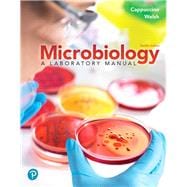This loose-leaf, three-hole punched textbook that gives students the flexibility to take only what they need to class and add their own notes–all at an affordable price.
For courses in Microbiology Lab and Nursing and Allied Health Microbiology Lab.
Foundations in microbiology lab work with clinical and critical-thinking emphasis
Microbiology: A Laboratory Manual, 12th Edition provides students with a solid underpinning of microbiology laboratory work while putting increased focus on clinical applications and critical-thinking skills, as required by today’s instructors. The text is clear, comprehensive, and versatile, easily adapted to virtually any microbiology lab course and easily paired with any undergraduate microbiology text.
The 12th Edition has been extensively updated to enhance the student experience and meet instructor requirements in a shifting learning environment. Updates and additions include clinical case studies, equipment and material checklists, new experiments, governing body guidelines, and more.











